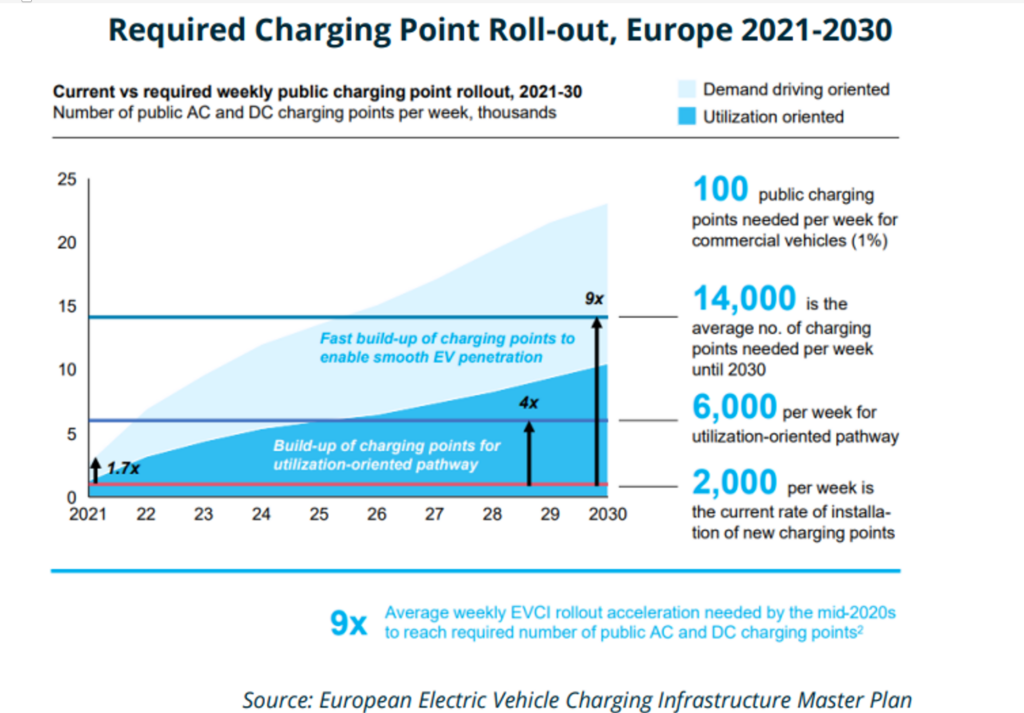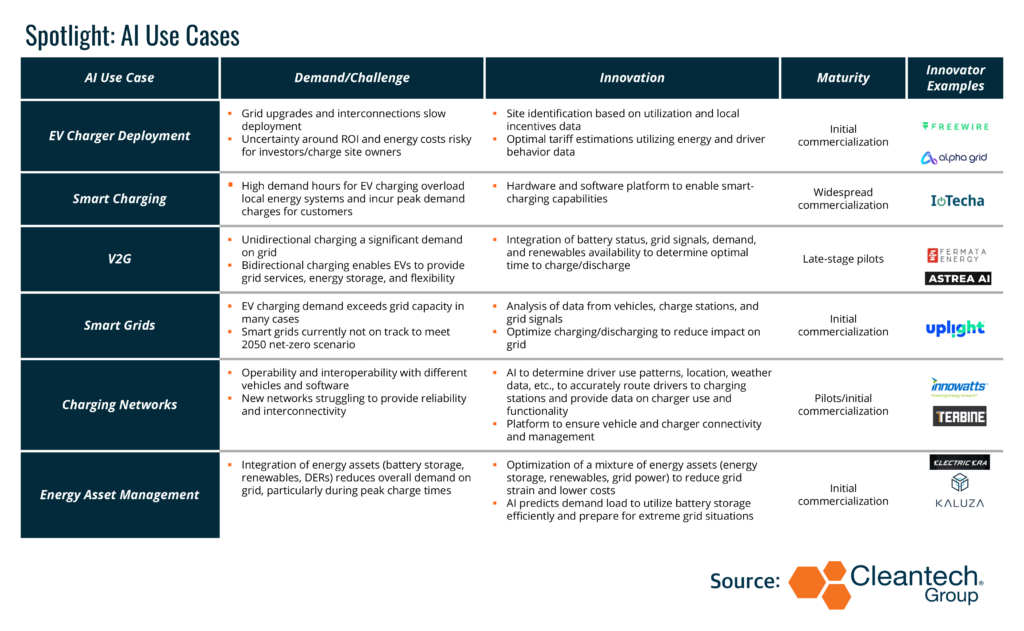Smart Charging Made Smarter: Novel Approaches to AI for EV Charging
Large-scale build-out of EV charging infrastructure is essential to further accelerate EV adoption and the overall decarbonization of the transport sector. The European Electric Vehicle Charging Infrastructure Master Plan estimates that EV charging station deployment must increase 9-fold across Europe by 2030 to meet decarbonization targets — about 14,000 new stations per week.
However, challenges with EV charging goes beyond simply scaling. Existing charging networks are facing significant reliability, interoperability, and grid connection obstacles that slow deployment, threaten the stability of local energy networks, and reduce the efficiency and cohesion of charging networks.
Grid Bottlenecks – A Critical EV Charging Barrier:
The energy side of the EV charging rollout equation is perhaps the most challenging. Most grid infrastructure was not built to accommodate the high energy demand required by EV charging stations, particularly fast-charging stations. The required grid infrastructure updates are a lengthy and costly process (anywhere from 6-24 months for highway chargers), significantly slowing EV charging network rollouts and deterring potential charging network operators.

In response to these challenges, innovators are leveraging AI to improve the business case for charging network operators and utilities, lowering deployment and operations costs of charging stations, optimizing existing grid infrastructure while minimizing grid upgrades, and integrating EV networks into local energy systems to support grid resilience and flexibility.
AI Innovation
AI innovators are overcoming obstacles with solutions like:
- Smart charging using predictive analysis of grid demand and load to optimize energy use, renewables integration, and reduce grid strain (e.g., Iotecha, BluWave-ai)
- Charging network management to ensure charge point reliability, connectivity, and interoperability (e.g., Terbine)
- Forecasting, scheduling, and dynamic pricing to facilitate vehicle-to-grid (V2G) and grid services (e.g., Fermata Energy) and to optimize V2G revenue and charging management particularly for fleets
- Software tools to determine optimal location of charging sites based on utilization patterns, driver behavior, and local incentives (e.g., Freewire)
- Integrated charging and energy asset management for load shifting (e.g., Electric Era, Chargepoint)
- AI learns from EV charging patterns to forecast demand and optimize all energy assets (EV batteries, energy storage, solar, microgrids) and ease grid load, provide demand response, and grid services
- AI predicts EV charging demand from consumer load data and front- and behind-the-meter energy availability mitigates peak loads and optimizes use of mixed energy sources, yielding optimization of charging, rates, and energy use mix to maximize utility bill savings and reduce demand charges

Competitive Trends and Market Dynamics
Fully integrated end-to-end charging solutions are particularly attractive to first time charging station operators and offer significant value by accelerating deployment and reducing infrastructure installation. These solutions capture the growing customer base of retailers, gas stations, and automotive OEMs that are looking to shift their business models and move into the charging network operation space. These aspiring charging network operators are turning to innovators rather than developing in-house products due to the complexity and difficulty of developing effective AI models.
Collaboration with innovators will allow them to reach the market faster with more sophisticated software. Incoming charging network operators have a two-fold challenge:
1) Overcome grid obstacles and unreliability challenges that plague the previous generation of EV charging networks, and
2) simultaneously offer a charging experience and product that competes with the market standard for AI-enabled charging infrastructure efficiency and reliability marked by Tesla.
Looking forward, expect automotive OEMs, utilities, and oil & gas majors to partner with AI charging innovators in a race to establish proprietary charging networks and take advantage of AI before it becomes market standard, in order to compete with existing charging network incumbents.



